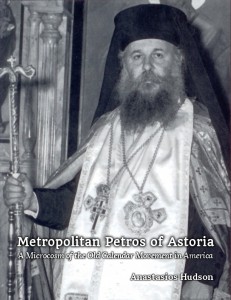What Does the Word Theotokos Mean?
This title for the Virgin Mary has been in use by the Church from time immemorial. When it was officially recognized at the Council of Ephesus in 431 AD, it was universally known. The reason that this council met was because a lone bishop, Nestorius, who was the bishop of the chief city in the Roman Empire, Constantinople, had begun to preach that Mary was not Theotokos but rather Christotokos (Birthgiver of Christ or Mother of Christ). He believed that to call Mary the Mother of God implied that she was prior to or superior to God.
The problem with his theology was that it implicitly divided Jesus Christ’s human and divine natures. Jesus Christ is both a man, and God incarnate, at the same time; He is fully God and fully man. A chief consequence of this complete union is that the divine and human properties influence one another. Theologically, this is called communicatio idiomatum, or simply, the “exchange of properties.” So when Christ God raised the dead, He did it through His human voice and hands; when He cured the blind He even used His saliva. These events were emphasized in the Gospels to show that Christ is really a man, and not just a phantom or a spirit that looks like a man, but that He is really and truly human. His divinity empowered His human flesh to accomplish miracles, but it was through Christ’s human suffering and self-denial, His accepting baptism by John the Baptist, His ascending the Cross, and other events undertaken in the flesh that He accomplished our salvation and opened up His grace. His human compassion even led Him to raise His friend Lazarus from the dead.
Since Christ’s human and divine natures interacted and were united, we can say that He is one person; He was not a human that God overshadowed, or a really great person with some divine attributes; He was God Himself. By saying that Mary was only the Mother of Christ, Nestorius was dividing His humanity and divinity. How could Mary be just the mother of Jesus’ human nature, and not of the complete Jesus, who is God? This reasoning led the bishops assembled at Ephesus to proclaim that the ancient title “Birthgiver of God” or “Mother of God” is the most correct statement of faith to protect the unity of Christ as one person. Thus, we can say that Mary truly carried God in her womb.
But why honor Mary at all? We honor her because she points us to Christ, as an example of complete submission to God. When the Angel Gabriel came to her, he honored her by saying “Hail, thou who art highly favoured, the Lord is with thee: blessed art thou among women” (Luke 1:28). After receiving this news, she responded in complete submission: “Behold the handmaid of the Lord; be it unto me according to thy word” (Luke 1:38). We call those who submitted their will to God saints, or holy ones. Filled with the Holy Spirit, they were transformed into God-bearing people. The Virgin Mary, the Theotokos, was the paradigm as she literally bore God; but we also can bear Him by our actions of faith. In every generation, holy people have followed Christ and bore Him to each succeeding generation, providing an unbroken chain of faith. In an age where we idolize actors, generals, musicians, and other famous people, we should instead turn our focus on to the saints, who by their example show us what faith in Christ can mean for our life. For this reason we honor the Virgin Mary and other saints; and to protect the unity of Christ, we call His mother Theotokos.



